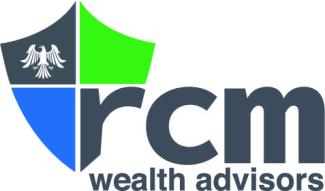RCM Managed Asset Portfolio - Q1 2021
RCM Managed Asset Portfolio - Q1 2021
Christopher Chiu |
RCM Managed Asset Portfolio
By Christopher Chiu, CFA
There May Be a Time For Changes: How Interest Rates Affect Your Portfolio
If you are a equity investor it’s been a somewhat challenging year so far. While the S&P 500 is higher than it was at the start of the year, it has given back gains several times already. And while the major averages haven’t suffered lasting damage, there is a lot that is churning beneath the surface. So this quarter I’m going to describe some of what has been happening in the bond and equity markets and then I will discuss some of things we are doing as a result.
So here’s what happened this past quarter.
Interest Rates Rising
As the economy reopens and adjusts to the size of the current $1.9T stimulus package, the bond market rightfully began to entertain the possibility of increased inflation. As a result interest rates went up without the Fed having to do anything. This had some consequences for both the equity and bond markets. I’ll just identify three here:
1) Rising rates coincided with a decline in tech stocks. With rates going up, more investors than before saw newly issued bonds as more attractive than they used to. Some sold equities (including tech) to buy these bonds, while others sold technology stocks for more short term stocks such as leisure & travel, energy, and financials.
2) Rising rates caused long-dated bonds to lose some value. This means that bonds with a long maturity at a fixed rate were priced lower by investors in favor of newly issued bonds offering a now higher rate. It remains to be seen whether rates will continue to rise and whether long dated bonds will continue to be repriced lower. But the Fed has stated they intend to keep rates low for the foreseeable future.
3) Rising interest rates also caused the dollar to strengthen. The reason is there are a lot of foreign investors that are willing to purchase US government and corporate bonds at now higher rates. But they cannot do this in their own currency; they have to buy dollars to do so. However, a stronger dollar has a negative effect on emerging market currencies and the value of emerging market stocks. Eventually this decline in emerging markets self-corrects as the exported goods they produce are eventually seen as more affordable. But not before there is a sell off in the short term. So rising rates in the US had a negative effect on foreign equities.
Your Investments
Depending on your risk tolerance and the portfolio program that was selected with your financial advisor, your portfolio may contain one or all three elements that we discussed above–(1) domestic equities, (2) foreign or emerging market equities, and (3) bonds.
Since your portfolio can be seen as consisting of three major elements, there are three major factors we look at when we make changes to your portfolio. When we make such changes, your mix of stocks to bonds won’t change. (For example, if you are a moderate investor in our programs, you will still be 50% stocks, 50% bonds; if you are a conservative investor you will still have 30/70 ratio of stocks to bonds and so on.) But we sometimes make changes below the surface in order to try to insulate your portfolio from turmoil and to take advantage of changes in the investing environment.
The first change is that we reduced your allocation to emerging markets. As we said before, emerging markets do well when the dollar is weakening and underperforms the broader market when the dollar is strengthening. And that is where we are at now: with rates rising, the dollar (as shown in UUP chart) is strengthening, and emerging markets (EEM) are weakening.
What you have in these charts is a five year slice of history. But the inverse pattern between the dollar and emerging markets exists even were you to go back twenty years and beyond. And where did we move that emerging market exposure? We reallocated it to US mid caps, which often do better than large caps at the beginning of a new market cycle.
The second factor we look at in order to make portfolio changes is the rise or decline in rates. This determines whether we increase or decrease the duration in the bond portfolio, making it more or less sensitive to rising interest rates. While we made some adjustments to the bond portfolio this quarter, rising rates are not yet in a situation that would result in us making major moves to reduce duration. A continual rise in interest rates may only be temporary. As we stated above, the Fed has not yet communicated that they are willing to let rates rise significantly.
What we did do was recalibrate parts of the bond portfolio, reducing some exposure to mortgage bonds and moved into other fixed income sectors including preferreds and international bonds. We expect the preferreds to do well as they mostly come from banks and other financial companies, which are set to do well as interest rate rise. Overall our managed bond portfolio continues to do better than the general bond market benchmark, the Barclays Aggregate index, which is a proxy for the universe of investment grade debt.
The third and final factor we look at is a set of risk on/risk off indicators that would cause us to reduce equities across the board. Taking risk-off is not something we would do on a whim. And so far nothing in the months of February and March has led us to do so. But there will eventually come a time when we do so with intention. So if we do find a correction is about to occur don’t be surprised if we take some risk off in your portfolio.
There’s more to be said about how we adapt the portfolio yet further to different environments. But rather than overloading you without information, I grouped and limited the discussion of an RCM portfolio to these three major buckets. The others we will cover in other quarterly letters if and when we decide it is necessary to make further changes. But if you’re really curious about what future moves might entail feel free to reach out to your advisor or call our office and I can walk you through our research and reasoning.

